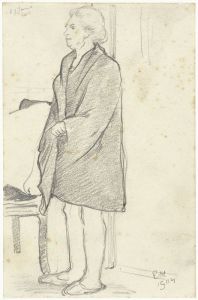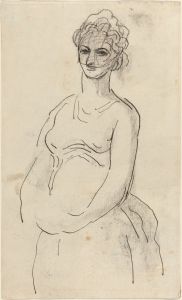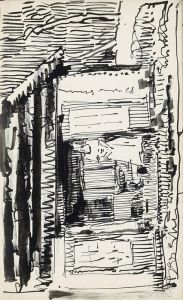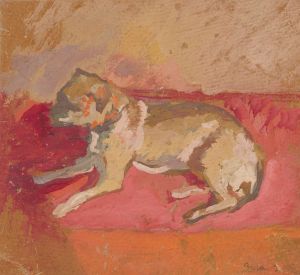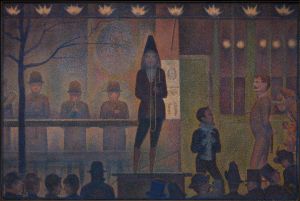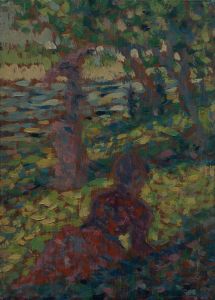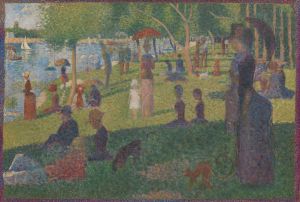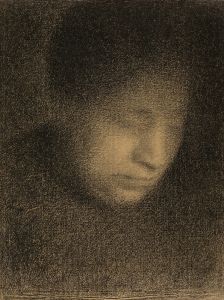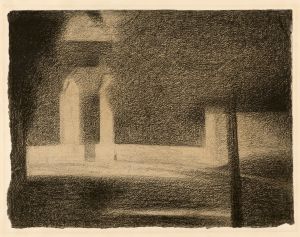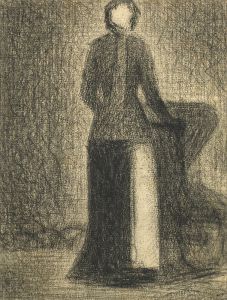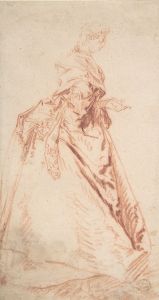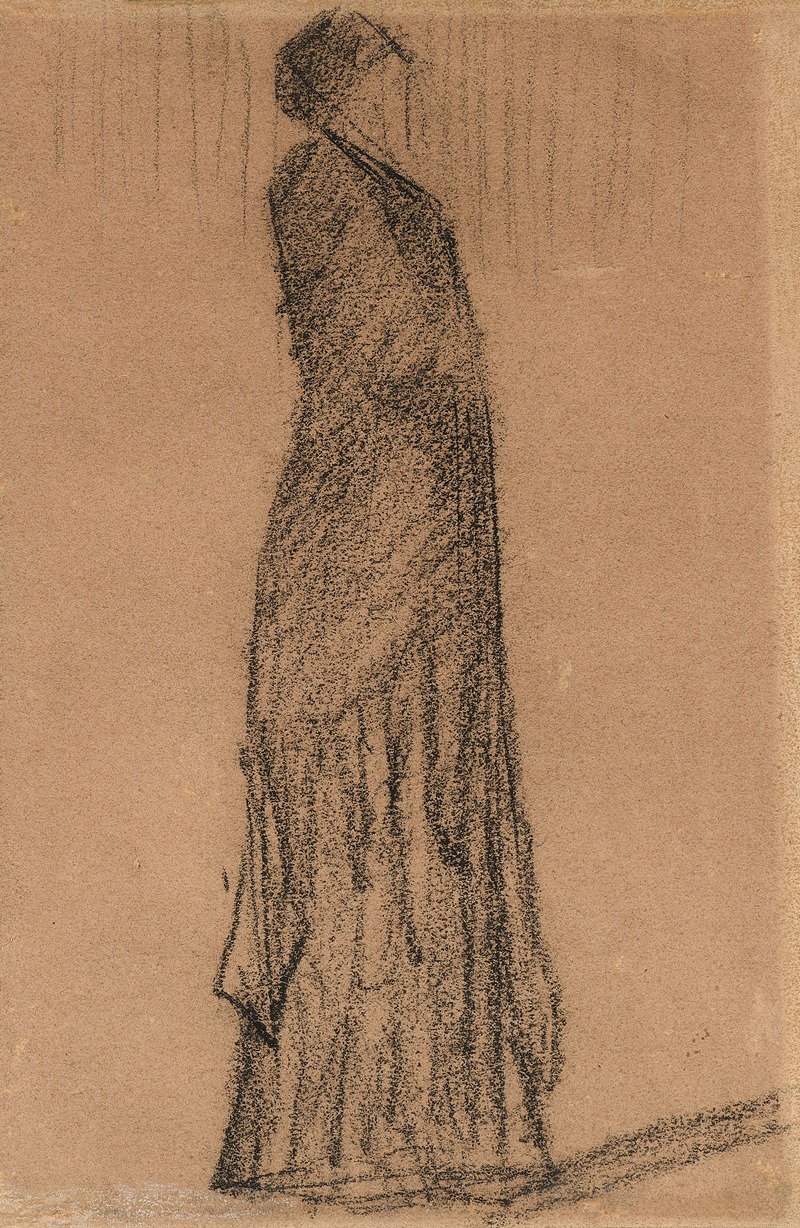
Femme debout tournée à droite
A hand-painted replica of Georges Seurat’s masterpiece Femme debout tournée à droite, meticulously crafted by professional artists to capture the true essence of the original. Each piece is created with museum-quality canvas and rare mineral pigments, carefully painted by experienced artists with delicate brushstrokes and rich, layered colors to perfectly recreate the texture of the original artwork. Unlike machine-printed reproductions, this hand-painted version brings the painting to life, infused with the artist’s emotions and skill in every stroke. Whether for personal collection or home decoration, it instantly elevates the artistic atmosphere of any space.
"Femme debout tournée à droite" is a drawing by the renowned French artist Georges Seurat, who is best known for pioneering the technique known as Pointillism. This particular work is a part of Seurat's extensive exploration of form and light through the medium of drawing, which he approached with the same meticulous attention to detail that characterized his paintings.
Georges Seurat was born on December 2, 1859, in Paris, France. He studied at the École des Beaux-Arts in Paris, where he was influenced by the classical training he received. However, Seurat soon began to diverge from traditional methods, developing a keen interest in color theory and the science of optics. This interest ultimately led to the development of Pointillism, a technique that involves applying small, distinct dots of color to a canvas, which then blend together in the viewer's eye to form a cohesive image.
While Seurat is most famous for his large-scale paintings such as "A Sunday Afternoon on the Island of La Grande Jatte," his drawings are equally significant in understanding his artistic process. "Femme debout tournée à droite" is one such drawing that showcases Seurat's mastery of the medium. The title, which translates to "Woman Standing, Turned to the Right," gives a straightforward description of the subject matter.
Seurat's drawings are primarily executed in conté crayon, a medium that allowed him to achieve a wide range of tones and textures. This particular drawing exemplifies his ability to render form and volume through subtle gradations of light and shadow. The use of conté crayon on textured paper creates a soft, atmospheric quality, which is a hallmark of Seurat's drawings. The figure in "Femme debout tournée à droite" is depicted with a sense of solidity and presence, achieved through the careful modulation of light and dark areas.
Seurat's approach to drawing was analytical and methodical. He often used his drawings as studies for his larger paintings, meticulously planning the composition and the play of light and shadow. However, his drawings are also appreciated as standalone works of art, admired for their technical precision and the way they capture the essence of the subject with minimal means.
"Femme debout tournée à droite" reflects Seurat's interest in the human figure and his ability to convey a sense of movement and stillness simultaneously. The drawing captures a moment in time, inviting the viewer to contemplate the figure's posture and expression. The simplicity of the composition, combined with the complexity of the tonal variations, demonstrates Seurat's skill in creating depth and dimension on a two-dimensional surface.
Seurat's drawings, including "Femme debout tournée à droite," are an integral part of his artistic legacy. They provide insight into his working methods and his innovative approach to art-making. Through these works, Seurat not only explored the possibilities of drawing as a medium but also laid the groundwork for future developments in modern art.
In summary, "Femme debout tournée à droite" is a testament to Georges Seurat's mastery of drawing and his ability to convey complex visual ideas with simplicity and elegance. This work, like many of his drawings, continues to be studied and admired for its contribution to the understanding of Seurat's artistic vision and the broader context of 19th-century art.





